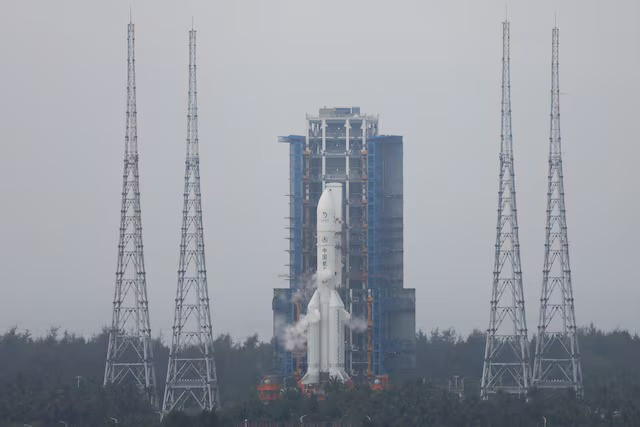China's Chang'e-6 lunar probe lands back on Earth
The Chang'e-6 spacecraft capps a complex 53-day mission heralded as world's first

A Chinese probe carrying samples from the far side of the Moon returned to Earth on Tuesday, state media reported, capping a technically complex 53-day mission heralded as a world first.
The Chang'e-6 spacecraft, bearing lunar soil and rocks, touched down at its predetermined landing site on Tuesday afternoon, state news agency Xinhua said.
Chinese researchers have for the first time discovered natural few-layer graphene in the lunar soil samples brought back by the Chang'e-5 mission, following observation and analysis of the samples.
The study, jointly conducted by researchers from Jilin University, the Institute of Metal Research under the Chinese Academy of Sciences, China's deep space exploration laboratory, and the Lunar Exploration and Space Program Center of the China National Space Administration, was published in the journal National Science Review.
Graphene plays an increasingly important role in extensive areas, including planetary and space science. It is estimated that graphene makes up about 1.9 percent of total interstellar carbon. The composition and structure characterization of natural graphene therefore can provide rich information on the geologic evolution of parent bodies.
Previously, the Chang'e-6 lunar probe was launched at an appropriate time at the beginning of May, according to the China National Space Administration (CNSA).
The combination of the Chang'e-6 lunar probe and the Long March-5 Y8 carrier rocket was transferred vertically to the launching area at the Wenchang Space Launch Center in south China's Hainan Province, the CNSA said.



















COMMENTS
Comments are moderated and generally will be posted if they are on-topic and not abusive.
For more information, please see our Comments FAQ